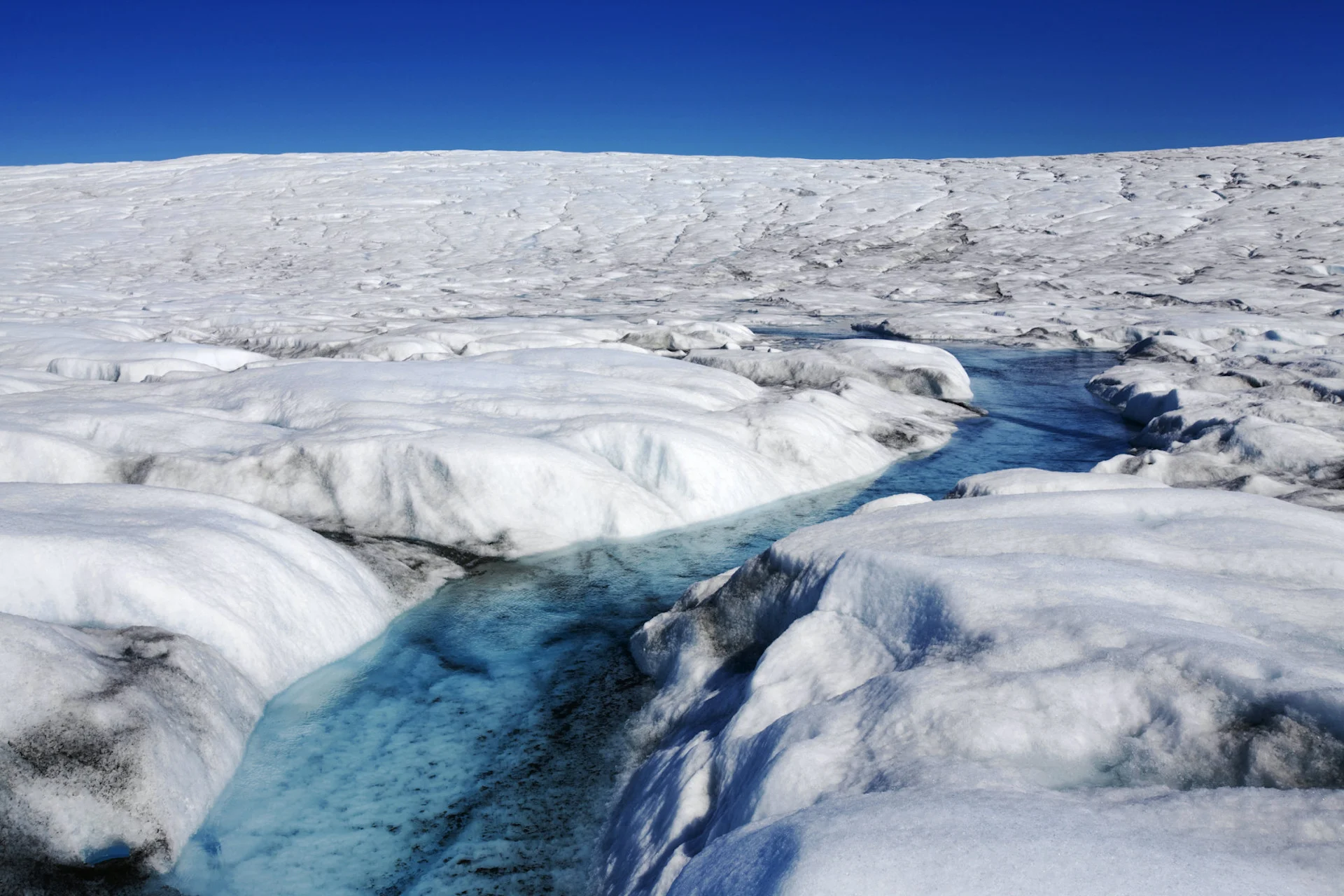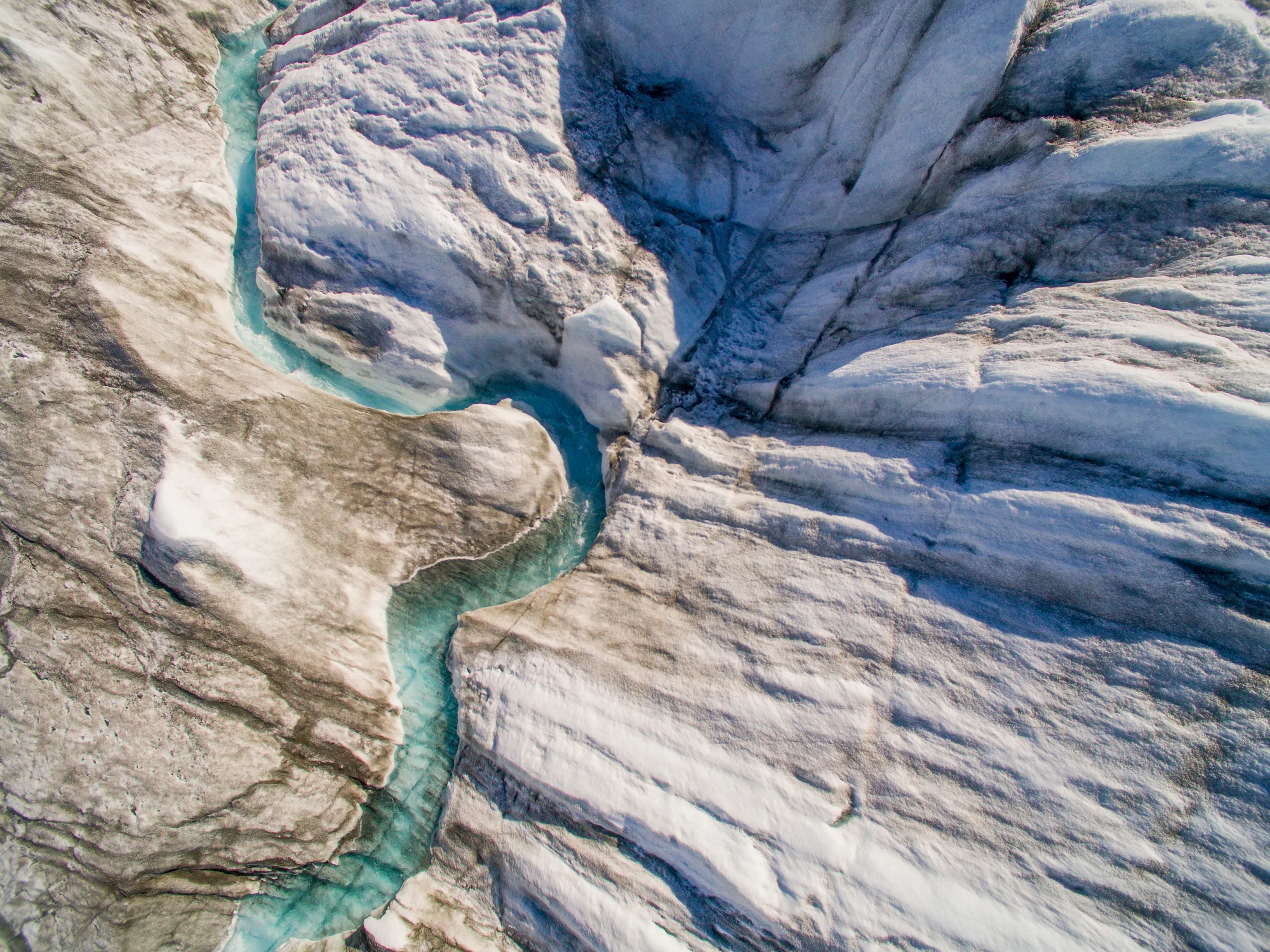
World's largest 'dam' forms on melting Greenland Ice Sheet
Meltwater from the top of the Greenland Ice Sheet is crashing down to the base of glaciers — a motion that is producing staggering amounts of heat, scientists say.
Warming global temperatures have turned the Greenland Ice Sheet into the world’s largest ‘dam’ due to the enormous amount of meltwater that is crashing down from the surface to the base of the ice sheet. The ‘waterfall’ motion of the meltwater as it rapidly seeps through large cracks in the ice releases enough energy to generate heat through friction, which further exacerbates melting.
This discovery was made by a team of international scientists who collected data from Greenland’s Store Glacier over seven years. Their study, published in Proceedings of the National Academy of Sciences, reports that the heating effect from the falling meltwater is by far the largest heat source underneath the ice sheet, which is “leading to phenomenally high rates of melting.”

Aerial view of meltwater stream flowing on the surface of the Greenland Ice Sheet. (Paul Souders/ Photodisc/ Getty Images)
Data collected in 2014 revealed that 82 million cubic metres of meltwater fell to the base of Store Glacier each day during the summer season. The melting point of the ice at the base of the glacier is -0.40°C and the water temperatures at this part of the ice sheet were as high as 0.88°C.
Shockingly, the researchers report that the energy produced during peak melt periods was comparable to the energy generated by the Three Gorges Dam in China, the world’s largest hydroelectric dam. When the summer season peaked, more hydropower was produced by the Greenland Ice Sheet than the world’s ten largest hydroelectric power stations combined.
“There’s a lot of gravitational energy stored in the water that forms on the surface and when it falls, the energy has to go somewhere,” Poul Christoffersen, a professor from the University of Cambridge, stated in the study’s press release.
“Given what we are witnessing at the high latitudes in terms of climate change, this form of hydropower could easily double or triple, and we’re still not even including these numbers when we estimate the ice sheet’s contribution to sea level rise.”
The Greenland Ice Sheet is the second-largest ice sheet on the planet after the Antarctic ice sheet. Due to its size and the amount of warmth the Arctic is experiencing, the ice sheet is now the biggest contributor to global sea level rise. The researchers say that their newly discovered mechanism of melting is not included in the current projections for sea level rise.
Thumbnail credit: Ashley Cooper/ Corbis/ Getty Images











